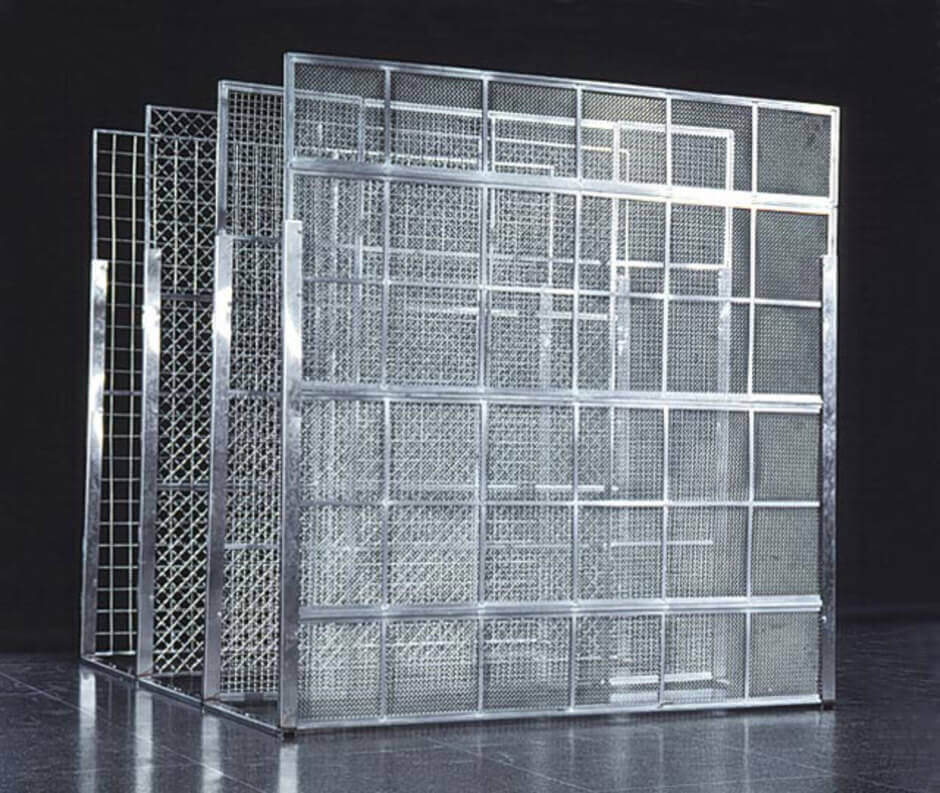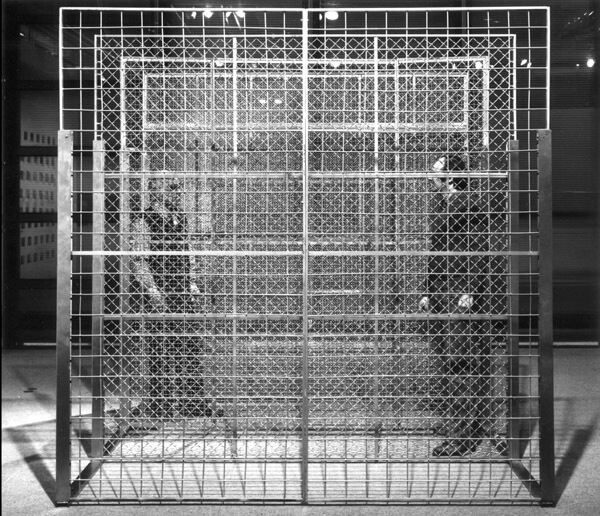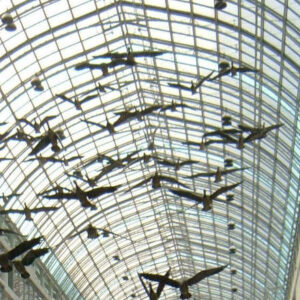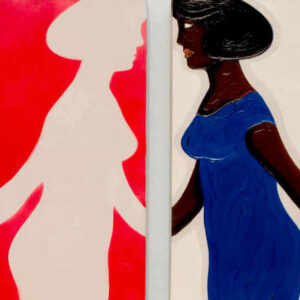Blind 1968

Michael Snow, Blind, 1968
Steel and aluminum, 246.4 x 245.7 x 246.4 cm
National Gallery of Canada, Ottawa
Michael Snow made his first group of sculptures in 1956. It was a series of small tables and chairs, with soft or melted edges, closely related in style and content to drawings, paintings, and an animated film, A to Z, 1956, produced at the same time. His next sculptures were painted wooden constructions—something between bas-relief and free-standing objects—making the link between wall and floor. The Walking Woman series contained many three-dimensional works, including an important group of stainless-steel figures commissioned for the Ontario Pavilion at Expo 67. Blindgives sculptural form to Snow’s preoccupation of those years with sense perception and its translation into form. In 1966 he had told an interviewer, “I want to make seeing palpable.”

Blind consists of four porous partitions framed in steel and clad in aluminum mesh. The construction might remind viewers of a chain-link fence. Snow specified four different gauges for his panels, which are mounted in parallel, forming a cube open on three sides. Visitors are encouraged to walk between the panels as if through corridors or a maze; they see the texture of the interior mesh panels, and they see through them to the gallery beyond. Those standing outside are seeing the people in the maze as part of the work, figures atomized or blurred as they move between the panels. Snow compares this effect to a cross-hatched drawing and to a camera going in and out of focus. The effect is also similar to the graininess of a photographic enlargement or the quality of offset printing as those technologies existed at the time.
Another comparison, suggested by the title and effected in stages by the panels, is to progressive loss of vision. This might be a biographical reading, related to Snow’s father, but it also reflects the artist’s sensitivity, his awareness of vision in relation to the other senses (other media). And this is not all, for “blind” can mean other things besides the physiological or psychological loss of sight. A blind is a shelter for concealing hunters. To blind is to confuse with bright light. Blindness can be the unwillingness to see. Snow the punster puts all these meanings (and others) into serious play with this performative work of sculpture.

 About the Author
About the Author
 Download PDF
Download PDF
 Credits
Credits